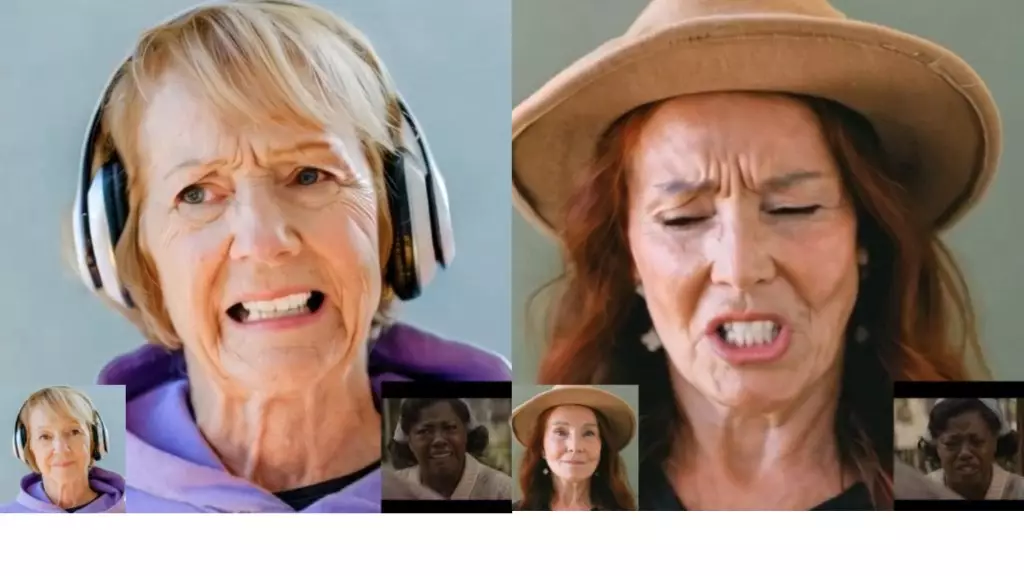The allure of artificial intelligence has permeated various sectors, but few breakthroughs have managed to captivate the public imagination quite like the unveiling of ByteDance’s X-Portrait 2. This pioneering AI system can seamlessly convert static images into dynamic video performances, showcasing psychological depth and emotional nuance previously reserved for actual actors. With X-Portrait 2, ByteDance, the same company known as the brains behind TikTok, is potentially reshaping the landscape of digital media and animation.
The technology behind X-Portrait 2 allows mere photographs to transform into convincing representations of character emotions across a spectrum of iconic film scenes. By invoking the likes of “The Shining” and “Face Off,” this advanced system employs a level of realism that feels almost uncanny. Critics might argue that such technology can dangerously blur the line between authenticity and artifice, yet the potential applications for film and creative industries are immense. The video output retains the essence of the person in the photograph while vividly portraying complex emotions such as fear, happiness, or rage.
Historically, previous artificial intelligence tools in animation struggled with stiffness; the movements often appeared mechanical and unconvincing. By rejecting traditional point-tracking methods, ByteDance has introduced a methodology focusing on the holistic movement of the face. This innovation allows for a much more fluid and authentic representation of emotions, as it captures the nuances of human expressions in a way that many other systems fail to achieve.
What sets ByteDance’s X-Portrait 2 apart from its competitors lies significantly in its unparalleled access to vast troves of real-world data. Operating TikTok gives ByteDance a unique vantage point, allowing it to compile a diverse dataset of user-generated videos—over a billion daily. This renders the potential for advanced AI model training that most companies can only dream of. While many firms rely on either limited datasets or synthesized data, ByteDance effectively employs actual emotional expressions from a myriad of faces and conditions, which enhances the learning process of its AI models considerably.
This collection methodology places ByteDance in a facilitatory role for AI development in ways that could potentially disrupt established norms within animation and digital storytelling. As traditional studios devote considerable financial resources to motion-capture technology and human labor, the implications of such a streamlined process cannot be underestimated. The feasibility of creating high-quality animated content with minimal resources represents a revolutionary change.
Despite the promising technological leap, the launch of X-Portrait 2 quickly brings into focus ethical issues surrounding AI-generated content. As society grapples with challenges posed by misinformation and digital authenticity, the need for monitoring how such tools are utilized becomes paramount. Furthermore, ByteDance’s decision to keep the intricacies of X-Portrait 2 under wraps contrasts starkly with rivals who are eager to share their innovations publicly. This indicates a growing consciousness about the potential for abuse in AI, from unauthorized reproductions of talent to the creation of misleading narratives.
In parallel, ByteDance is also navigating the complex political and regulatory landscape prevalent in Western markets. Recent movements against TikTok in Canada and continuing debates in the U.S. could hinder the company’s efforts abroad while they simultaneously attempt to expand their AI research initiatives into Europe and Malaysia. The juxtaposition of technological advancement against possible regulatory constraints will likely influence how their innovations are received outside of their home market.
ByteDance’s focus on human-centric movement and expression illustrates a more profound strategy. While linguistic processing remains the domain of AI juggernauts like OpenAI, ByteDance leverages its unique capabilities to enhance our understanding of human communication in multimedia formats. As digital spaces continue to play significant roles in both work and social environments, mastering human emotional transfer through technology could reshape how we communicate in various contexts—business meetings, virtual gatherings, and more creative expression areas.
As interest in AI-generated content accelerates in diverse sectors—including entertainment, education, and corporate communication—this advanced technology arrives just in time to fulfill a burgeoning demand. However, the realization of such sophisticated tools brings forth vital questions regarding validation and authentication of digital content. In a world increasingly skeptical of online media, assurance becomes essential.
Ultimately, ByteDance’s X-Portrait 2 embodies a complex narrative of innovation juxtaposed with ethical dilemmas and regulatory challenges. As AI technology further evolves, understanding its implications will be crucial for both creators and consumers alike, defining a future interwoven deeply with artificial creativity.


Leave a Reply